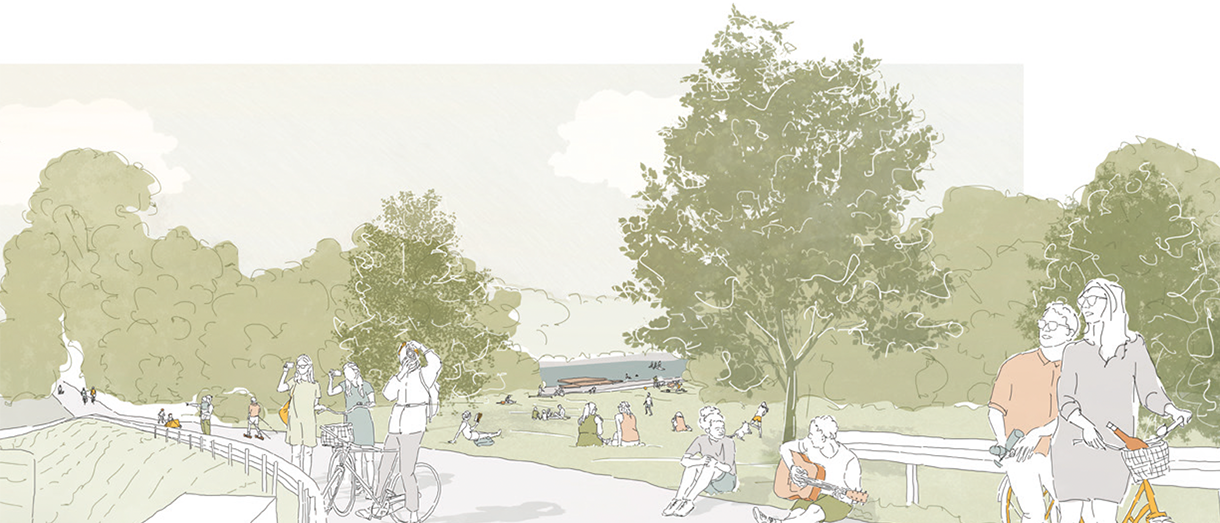Infrastructure meets landscape
Landscape integration of the Freising west bypass
Master's Thesis M.A. Landscape Architecture, Judith Schenkyr
Topic
Transport infrastructures shape our space, create boundaries and access our surroundings. They are design elements in the landscape. Unfortunately, they are often planned with a focus on efficiency and engineering. As a result, they become a disturbing factor and interfere with neighbouring uses. The common planning approach of landscape design and traffic planning is missing. The thesis first deals theoretically with the topic of infrastructure and landscape The current position of experts is reviewed and topics such as urban development or the effects of transport infrastructures are described in more detail. The first theoretical examination of the topic of infrastructure and landscape shows that transport infrastructures have a significant impact on recreational areas close to cities. However, as part of urban development, they have the potential to provide impulses for entire regions.This is followed by an analysis of projects that have addressed the issue of infrastructure and spatial design. The findings are summarised in recommendations for action. These recommendations for action help to integrate infrastructures into the surrounding landscape. The three most important functions of the landscape, recreation, landscape image and ecology, form three levels of action for the landscape architectural design.Based on the developed recommendations for action, a concept for the landscape integration of the west tangent in Freising is designed. This concept mediates between the traffic infrastructure and the surrounding landscape. This2 exemplary design can serve as a catalyst for the area around the Vöttinger Weiher and possibly also draw urban attention to the problem. A precise site analysis helps to formulate site-specific challenges. A survey among the residents and users of the area supports the planning with specific wishes and ideas. The aim of the design is to integrate the western tangente into the recreational and ecological landscape and to enhance the area.Based on the general theoretical analysis, a primary thesis is formulated. In short, it states that only when planning a transport infrastructure beyond its spatial boundaries, it be successfully integrated into the surrounding cultural landscape. Further secondary theses result from the local analysis and are explained in more detail in the paper. The integration of the western tangent into the surrounding cultural landscape takes place via three levels of action, each of which contains a catalogue of measures. Important measures are the expansion of the social meeting place at the Vöttinger Weiher, the renaturation of water bodies and the adapted moor-friendly agricultural use. In addition, there is the enhancement of the riding experience to increase the appreciation of the natural area. In this way, the Freising West Tangent can be integrated spatially, socially, visually and ecologically into the surrounding cultural landscape
Supervision
Prof. Regine Keller
A copy of the master thesis is available by appointment at the chair as well as at the Weihenstephan branch library.
